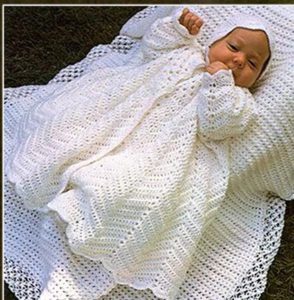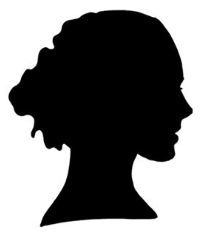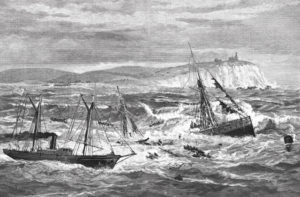Jeanne Gehret's Blog: http://SusanBAnthonyFamily.com/, page 14
December 15, 2016
Female Homesteaders Needed
 Susan’s brother D.R. Anthony emigrated to Kansas with the inaugural party of the Emigrant Aid Company in July 1854, and Clarina Nichols arrived with a larger group that fall. By the time Nichols set foot in Kansas,
Susan’s brother D.R. Anthony emigrated to Kansas with the inaugural party of the Emigrant Aid Company in July 1854, and Clarina Nichols arrived with a larger group that fall. By the time Nichols set foot in Kansas,
D.R. had already returned to his home in Rochester, NY. Both made the journey in response to the Kansas-Nebraska Act, which decreed that citizens of the new territory should determine whether it would enter the Union as a slave state or free state. The state was then a rough frontier, and in one letter Nichols described ten thousand rowdy pro-slavery Missourians storming the Kansas polling place to prevent antislavery voters from casting their ballots.
Nichols wrote many letters to eastern newspapers, cheerfully describing the austere conditions in Kansas and noting that most of the male emigrants who abandoned Kansas did so because they could not keep house and farm at the same time. She, however, was forced to do just that when shortly after moving to a remote, pro-slavery area outside of Lawrence, her husband died leaving her friendless and needing to homestead by herself.
Not only did she want to fight slavery in the territory, but she hoped that the new state would have a more open mind on women’s rights. She addressed numerous legislatures in Wisconsin, Ohio, and Kansas, declaring that women should either be allowed to vote or excused from taxation. She was responsible for gaining women the right to vote in the school elections of Kansas in 1860 and many other gradual victories. Always, her ultimate goal was for woman suffrage.
I hope that Clarina will make an appearance in book 2 or 3 of my Dauntless Series. Book One, The Truth About Daniel, looks like it will be available in January. Watch this space!
This blog is too short to reproduce Nichols’ genius for storytelling and humor, especially through the creation of her pseudonym Deborah Van Winkle, an outspoken Yankee who spoke of “wimins wrongs.”
In my research into this remarkable woman, I can across a favorable review of Revolutionary Heart, a Nichols biography by Diane Eikhoff, which I intend to read at my earliest opportunity. Eikhoff has apparently re-issued that 2006 book with a later book entitled Clarina Nichols, Frontier Crusader for Women’s Rights.
Other information about this foremother comes from the Kansas Historical Quarterly.
December 8, 2016
Replica of Historic Captain’s Home on Vineyard
It was fun visiting Martha’s Vineyard several years ago and seeing where Anna Osborn Anthony grew up as daughter of whaling captain Abraham Osborn. Unfortunately, I was not able to see the interior of the house, but the inside look at this historic replica of that era helps me imagine my heroine in the rooms where she lived. (This replica is NOT of Osborn House.)
The captain’s first two wives died young; all told, he sired 11 children over more than a 30-year period. It is easy to envision large family gatherings in a dining room embellished with beautiful moldings and full of beautiful china that may have been accompanied the captain home from a world tour.
Annie’s home served many purposes during her parents’ tenure. Not only did the family grow up there, but at times they used part of the home for the customs house and sometimes rented out rooms. One of their dinner guests was lighthouse inspector Raphael Semmes, who later became the Confederate captain of the Alabama, which sank the whaler Ocmulgee owned by the Osborns.
Like many homes on the Vineyard, the Osborn house (built in 1840) was constructed with elements of Federal and Greek Revival styles. As it is prominently situated on South Water street facing Osborn Wharf, Annie probably had a clear view of Katama Bay and the ferry to Chappaquiddick.
For more on Annie’s family and my photo of her home, see this earlier post.
December 5, 2016
Not His Father’s Quaker

Punchbowl that belonged to the Anthony family. Photo by Jeanne Gehret
Daniel Anthony, the father of Susan B. and her siblings, was of such an independent mind that he married “out of Meeting,” i.e. someone who was not a Quaker. In fact, he married a girl who had been his student, a Baptist named Lucy Read. For this he was temporarily ousted from the Meeting, as he was at numerous other times during his life. This revolving door seems to be true for most of the Anthonys; eventually the Rochester-based Anthonys worshiped with the Unitarians, and Susan’s brother D.R. ceased to be a regular churchgoer altogether. But they never lost their devotion to that inner light they held so dear.
Susan in her authorized biography by Ida Husted Harper recounted how her father abstained from liquor. Like many merchants in their town, he sold liquor until one night a man was found frozen to death with an empty jug by his side. “Although Mr. Anthony had not sold him the rum, he resolved . . . to sell no more.” Later, when a business partner advised Daniel that he’d need to provide gin to get support for a house-raising, he stubbornly but successfully carried the day by serving lemonade instead.
Susan espoused this attitude so wholeheartedly that she joined a band of temperance speakers and turned down at least one proposal because her suitor drank liquor. Imagine the family’s consternation when an early letter from son D.R. described his enjoyment of whiskey in Kansas! Indeed, D.R.’s memorabilia displayed by the Leavenworth County Historical Society included a lovely cut glass punchbowl set.
The elder Daniel was also a pacifist in his early years, protesting his payment of taxes to a government that supported war. How distressed he must have been to learn that D.R. shot a man to death on the streets on Leavenworth, Kansas! Although D.R. was acquitted on the grounds of self-defense, the Quaker community back East required thorough explanations before allowing him to remain a member in good standing. It is perhaps a good thing that Susan’s father did not live to witness other violent encounters that punctuated his oldest son’s life. To date I have recorded at least nine times when D.R. exchanged shots or other forms of assault with men whose views differed from his own.
D.R. kept the Anthony viewpoints on abolition, but he was far from a pacifist or temperance enthusiast. In my upcoming novel, The Truth About Daniel, he always follows his own lights, often at the peril of his personal safety and reputation.
November 30, 2016
Recycling Family Names
 Nowadays expectant parents may give their babies names based on seasons, astrological signs, place names, or popular celebrities. Or they may create new names
Nowadays expectant parents may give their babies names based on seasons, astrological signs, place names, or popular celebrities. Or they may create new names
entirely by combining sounds that they like. But 19th century folks seemed to play it safer by bestowing the same names on members of subsequent generations, as demonstrated by both the Osborns and the Anthonys. It’s enough to make a historical researcher dizzy!
Among the Anthony family, Susan got her middle name of Brownell from an aunt. Her father and brother both had the first name of Daniel; since her brother’s middle name was Read (the maiden name of his mother), they referred to him as D.R.
Susan’s brother D.R. founded a publishing dynasty led by a series of sons and grandsons also named D.R. When Merritt Anthony and his wife Mary had a daughter, they named her Anna Osborn, after D.R.’s wife. D.R. and Anna named one of their daughters Susan B.
Among the Osborns of Martha’s Vineyard it was not quite as bad, but D.R.’s wife Anna Eliza Osborn (Annie) also had a stepmother by the same name. Annie’s father and oldest brother were both named Abraham. Because Martha’s Vineyard was small and isolated geographically, the same surnames appear again and again in a fascinating mix of who married whom.
As I was becoming acquainted with the Osborns, I came across a letter to Rochester from D.R. saying that he was enclosing a gift for Anna Eliza, suggesting that she was a family friend. Voila! I thought—he met his future bride through his family. This seemed like a plausible explanation until I realized that one of the daughters of Guelma Anthony Maclean was named Anna Eliza. Forget that theory!
All of these interesting name repetitions forced me to make some hard choices when writing The Truth About Daniel. First and foremost, the lack of information about how D.R. and Annie met gave me artistic license to fashion a setting that I deemed both plausible and suitably romantic. Also, I shortened Annie’s stepmother’s name to Eliza and always refer to her brother as Abe to distinguish him from his father Abraham.
The Truth About Daniel is the first book in the Dauntless Series. When I get into books two and three, I will have to figure out how to distinguish among all those publishers named D.R. Anthony!
Click here if you would like free directions for the sweet christening set pictured above.
November 28, 2016
Shipwrecked!
Storms off Martha’s Vineyard can get fierce with 35- to 40-knot winds and 20- to 25-foot seas. Read on for contemporary and historical accounts of sea rescues.In 2007 two crews braved icy decks in March 2007 to evacuate an injured man. Because choppy seas threatened to smash the smaller boat against the larger one, the two boats maintained a distance of two feet while lowering a rope ladder.
Closer to the Vineyard, two shipwrecks occurred at Devil’s Bridge during Anna Osborn Anthony’s lifetime. The waters off the northeast end of the island hide a shallow reef running northwest toward the island of Cuttyhunk, with large boulders and a strong rip tide.
In 1859 the whaler Nantucket ran aground near Nashuwena Island off the Vineyard’s Coast , ending the voyages of a ship that was nearing its home port after safely sailing thousands of miles.
And in 1884 more than 100 people drowned on the passenger steamer City of Columbus and others were rescued by the Native Americans at the Life Saving Station.
The Gay Head lighthouse has long stood sentinel over Devil’s Bridge, historically staffed by Native Americans from the town there.
More personal yet was the wreck of the whaler Ocmulgee in 1862. Owned and operated by Anna’s family, the commercial whaler was confiscated by Confederates and burned while the crew was forced to watch.
Given these examples, it’s possible to imagine how Anna would have felt it desirable to move inland as far as Kansas to marry D.R. Anthony.
Image from Harper’s Weekly
November 26, 2016
How to Pay a Thanksgiving Call
 In the mood to see your friends during the Thanksgiving break? Here’s what you would do if you lived in the 1800s and she was a lady:
In the mood to see your friends during the Thanksgiving break? Here’s what you would do if you lived in the 1800s and she was a lady:
You send your servant to the lady with a note requesting a visit
Your servant travels to the lady’s house and gives the note to her servant
Her servant gives it to her. If she wants to see you, she tells her servant yes and indicates when calling hours are: perhaps Tuesday and Thursday from 3-4
Her servant tells your servant
Your servant returns to tell you
Some things really do get easier over time! I wonder how Victorians would have liked email?
Stay tuned for more fascinating tidbits from Victorian Christmas in Williamsport, PA! If you enjoy this page, please like it!
Photo by Jeanne Gehret
November 24, 2016
Lincoln’s Thanksgiving Proclamation 1861
Thanksgiving is my favorite national holiday, perhaps because I lull myself to sleep nightly with a gratitude list. The Civil War was taking a toll when Abraham Lincoln in 1861 decreed that the entire nation should “count its blessings” on the last Thursday of November. Here is an excerpt of Lincoln’s gratitude list as enumerated by his proclamation:
“In the midst of a civil war of unequalled magnitude and severity, . . . order has been maintained, the laws have been respected and obeyed, and harmony has prevailed everywhere except in the theatre of military conflict. . . . Needful diversions of wealth and of strength from the fields of peaceful industry to the national defense, have not arrested the plough, the shuttle or the ship; the axe has enlarged the borders of our settlements, and the mines, as well of iron and coal as of the precious metals, have yielded even more abundantly than heretofore. Population has steadily increased, notwithstanding the waste that has been made in the camp, the siege and the battle-field; and the country, rejoicing in the consciousness of augmented strength and vigor, is permitted to expect continuance of years with large increase of freedom.”
In issuing the proclamation that the day of giving thanks should be celebrated throughout the country on a fixed day, President Lincoln was heeding a suggestion by Sarah Josepha Hale, editor of Godey’s Ladies Book.
Prefiguring Susan B. Anthony in 1846, Hale wrote, “The time of action is now. We have to sow the fields—the harvest is sure. The greatest triumph of this progression is redeeming woman from her inferior position and placing her side by side with man, a help-mate for him in all his pursuits.”
Wishing you the blessing of a grateful heart.
November 22, 2016
Where did D.R. Anthony’s Wife Come From?
 Anna Eliza Osborn, born in 1844, was the fifth child of Abraham and Eliza (Norton) Osborn of Edgartown in Martha’s Vineyard. Abraham’s first wife died before he married Anna’s mother, and they had one son. Anna’s mother died when the girl was ten years old, and her father then married Ann Eliza Mayhew and had three more children, bringing the number of Abraham’s total offspring to eleven. All three of her father’s wives came from old Vineyard families. How did these roots shape the woman who married Daniel Read Anthony?
Anna Eliza Osborn, born in 1844, was the fifth child of Abraham and Eliza (Norton) Osborn of Edgartown in Martha’s Vineyard. Abraham’s first wife died before he married Anna’s mother, and they had one son. Anna’s mother died when the girl was ten years old, and her father then married Ann Eliza Mayhew and had three more children, bringing the number of Abraham’s total offspring to eleven. All three of her father’s wives came from old Vineyard families. How did these roots shape the woman who married Daniel Read Anthony?
Anna’s island home comprised a close-knit community organized around the whaling industry: her father, who had commanded many whaling vessels, built a stately Federal-style home facing the harbor in Edgartown; her brother Abraham was also a captain; her father and uncle owned a wharf together; and for part of his career her father ran the customs house. The family worshipped at the Congregational church that was only a block away.
Other races and cultures added spice to the mix of people in Martha’s Vineyard: black sailors from Cape Verde and free black people, as well as the Wampanoag Indians who predated the Europeans on that island. A Wampanoag woman married to a black man participated in an historic tale that figures prominently in island history.
In addition to English, Anna almost certainly communicated with Martha’s Vineyard Sign Language, a language of gestures that was unique to her island. Because hereditary deafness was common on Martha’s Vineyard (at one point, 1 in 25 islanders were deaf), the signs were completely integrated into island culture.
So far no images of young Anna have come to light. If you have access to any with positive identification, please send them along!
http://SusanBAnthonyFamily.com/
or her brother Daniel Read (D.R.) Anthony. I share all of these on my blog. You can also get special insights into my new b Whenever I travel, I stop in to visit a site connected with Susan B. Anthony
or her brother Daniel Read (D.R.) Anthony. I share all of these on my blog. You can also get special insights into my new book The Truth About Daniel, based on D.R.'s romance and his rambunctious days as an original Kansas Jayhawker ...more
- Jeanne Gehret's profile
- 15 followers






